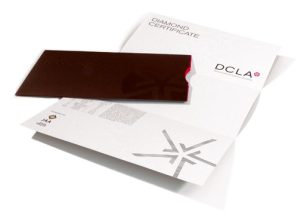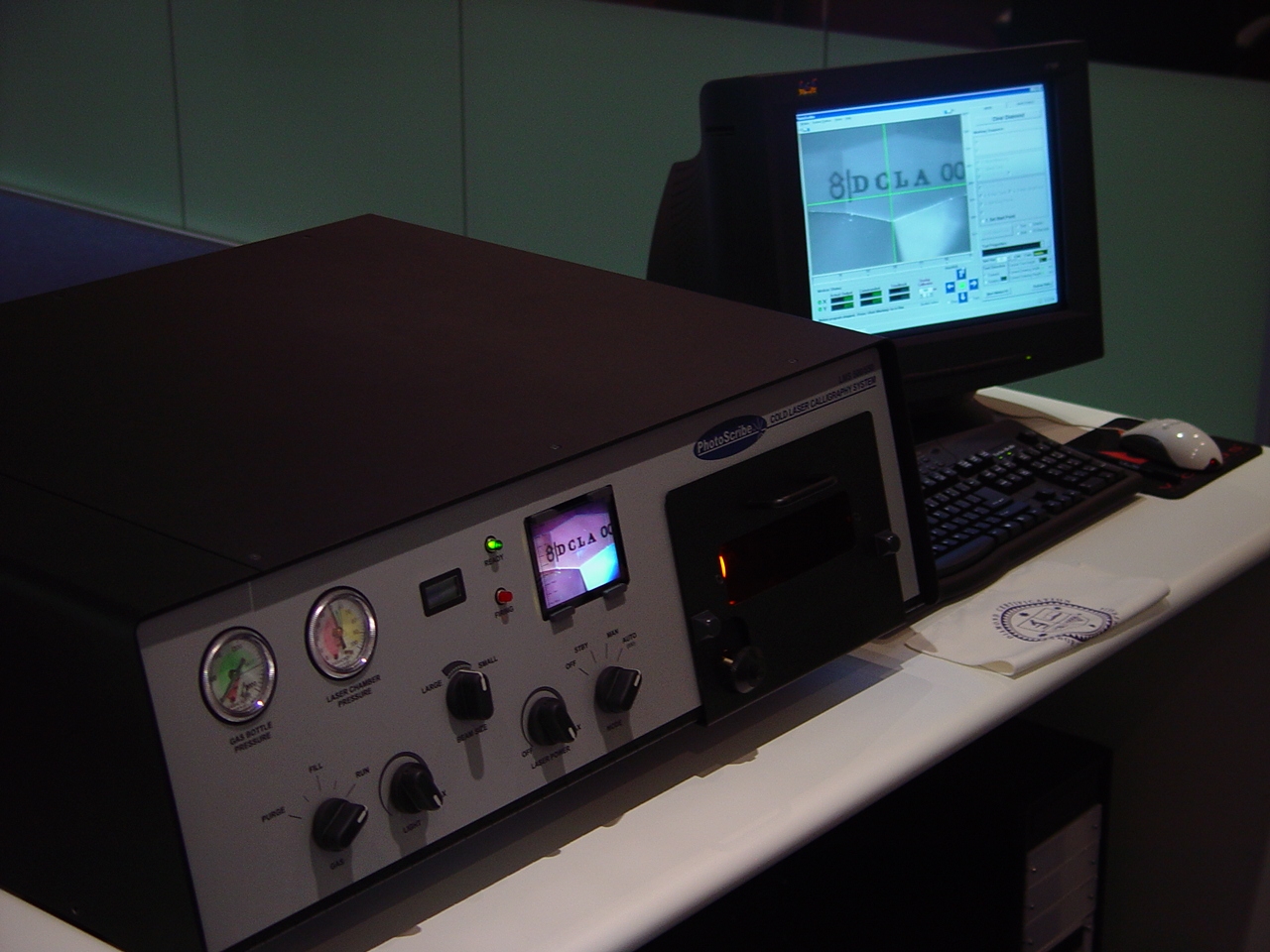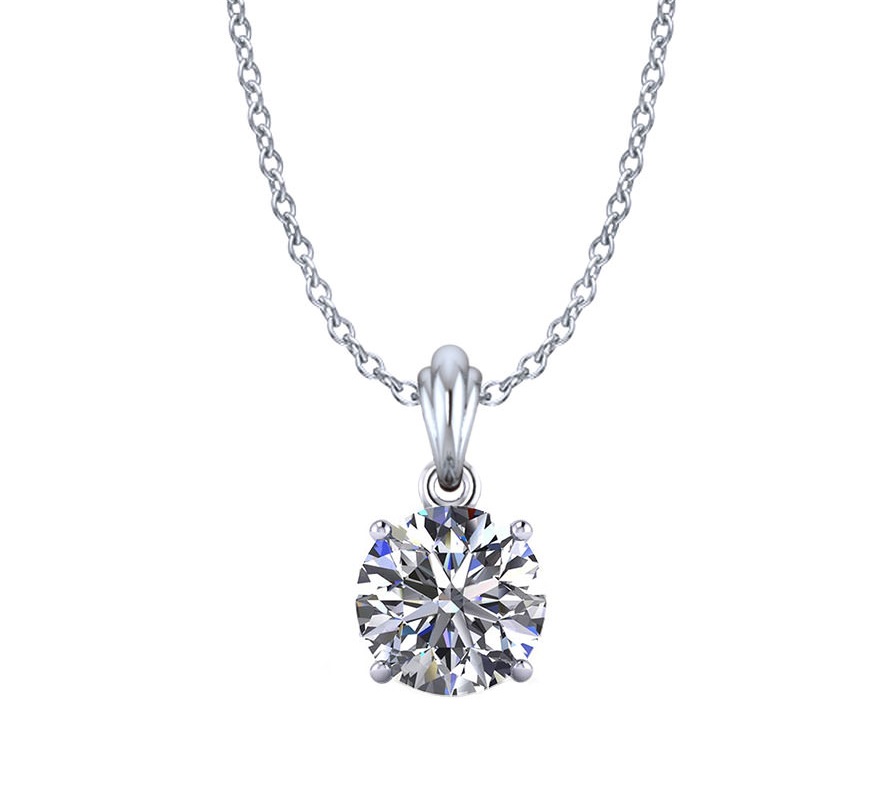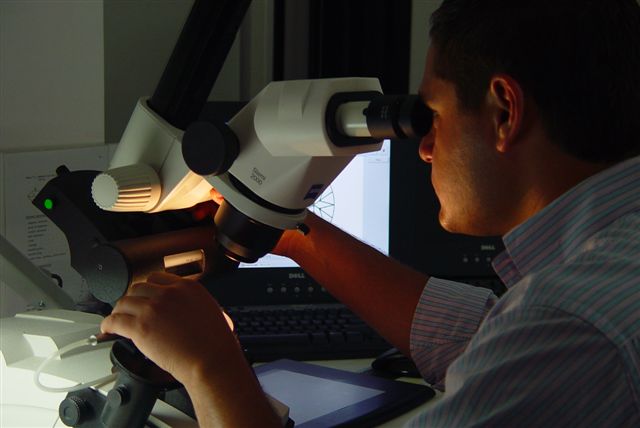The DCLA uses the latest Photoscribe cold laser technology that allows excellent control during diamond laser inscription without damaging the diamond. The PhotoScribe cold laser is the only laser guaranteed not to damage or alter your diamond by penetrating beyond the surface.
What is diamond laser inscription?
Laser inscription is the use of a very fine, precise laser beam to write a diamond certificate (diamond grading report) number or customised personal message on the girdle (outside perimeter) of a diamond. The diamond’s laser inscription is totally invisible to the naked eye and can only be seen with a magnifying loupe. It does not change the colour or clarity grade of a diamond and is considered permanent as it can only be removed by a professional diamond cutter.
Can I bring my diamond jewellery to the laboratory for certification?
It is impossible to accurately grade diamonds while still in a setting, only estimates and approximations of the 4 C’s are possible. The setting may hide inclusions, mask colour, and make accurate measurements and weighing impossible. You therefore need to have to have the diamonds removed from the setting before submitting them to the DCLA laboratory. Your jeweller will be able to do this for you, it is a quick and relatively inexpensive process.
Will my diamond certificate or diamond grading report have a value on it?
 A certificate is NOT a valuation and therefore does not indicate a dollar value. A diamond grading certificate is an in-depth description of a diamond’s characteristics, or 4 C’s, while an appraisal or valuation is a written estimate of the approximate retail replacement value at a given point in time.
A certificate is NOT a valuation and therefore does not indicate a dollar value. A diamond grading certificate is an in-depth description of a diamond’s characteristics, or 4 C’s, while an appraisal or valuation is a written estimate of the approximate retail replacement value at a given point in time.
Who are the DCLA and what do they do?
The DCLA or Diamond Certification Laboratory of Australia is an independent diamond grading laboratory, and the only diamond grading laboratory in Australia that is internationally affiliated and recognised. Grading is done in accordance with IDC (International Diamond Council) rules.
Mission Statement
DCLA History
Technology & Grading Process
DCLA Laboratory Team
Why would I want my diamond certified by the DCLA?
The DCLA is the only internationally affiliated and locally accredited diamond grading laboratory in Australia. Although there are other highly respected laboratories internationally, the DCLA is the only recognised diamond grading laboratory located in Australia, making it easier for Australians to deal with any problems or queries as they arise. In addition, DCLA is the only diamond certification laboratory to stand behind our work and offer a full-replacement Diamond Grading Guarantee.
My retailer/merchant produces his own diamond report, is that sufficient?
No, diamond certificates or diamond grading reports produced by people who have a financial interest in a diamond are not independent, and therefore cannot be free of bias.
How do I know that my diamond certificate or diamond grading report is from an independent laboratory ?
Ask the jeweller if the diamond certificate comes from an independent diamond laboratory or if it produced by a diamond merchant or retailer, then do your research. Make sure the certificate is issued by the DCLA or another highly respected diamond grading laboratory; DCLA is the only diamond grading laboratory worldwide to offer a full-replacement Diamond Grading Guarantee.
Why is it important that my diamond certificate come from an independent diamond grading laboratory?
If you were buying a house would you accept an inspection from the owner? Of course you wouldn’t, you would insist that the inspection be done by an expert with no financial interest in the transaction. This situation is the same when buying diamonds. Be careful of diamond reports produced in-house by diamond merchants or retailers, as the report may be inaccurate and overstate the actual grading of the diamond.
What is diamond plotting?
Diamond plotting is the process of recording a diamond’s inclusions. At the DCLA, diamond plotting is done on a computer diagram, which is then stored in a database together with all the measurements and features of a diamond. This database is similar to a finger print database, as all diamonds have unique inclusions. The diamond’s plotting is shown on the diamond certificate, and is very important in the identification of a diamond.




